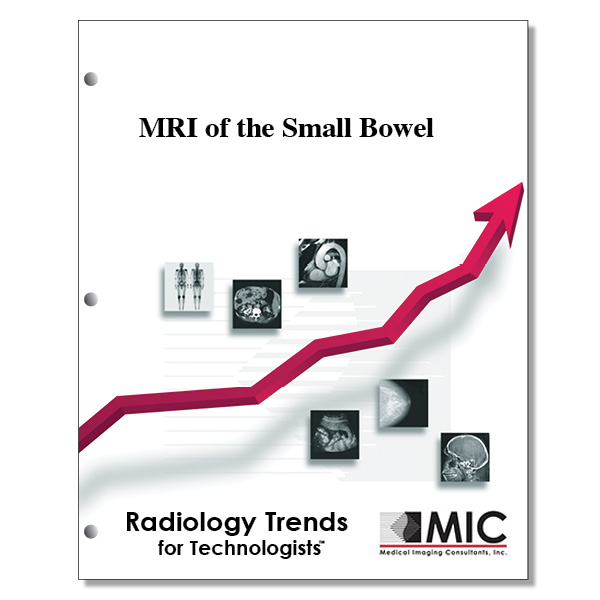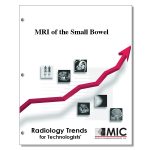

MRI of the Small Bowel
Imaging improvements gained by using MR enteroclysis and MR enterography in assessing small bowel morphology and functional data are presented.
Course ID: Q00352 Category: Radiology Trends for Technologists Modalities: MRI, Radiography4.75 |
Satisfaction Guarantee |
$39.00
- Targeted CE
- Outline
- Objectives
Targeted CE per ARRT’s Discipline, Category, and Subcategory classification:
[Note: Discipline-specific Targeted CE credits may be less than the total Category A credits approved for this course.]
Computed Tomography: 1.50
Procedures: 1.50
Abdomen and Pelvis: 1.50
Magnetic Resonance Imaging: 4.75
Patient Care: 0.25
Patient Interactions and Management: 0.25
Procedures: 4.50
Body: 4.50
Registered Radiologist Assistant: 3.75
Patient Care: 0.25
Pharmacology: 0.25
Procedures: 3.50
Abdominal Section: 3.50
Radiation Therapy: 3.50
Procedures: 3.50
Treatment Sites and Tumors: 3.50
Outline
- Introduction
- Technical Considerations
- Enteral Contrast Agents for MR Imaging
- MR Techniques: Enterography and Enteroclysis
- MR Imaging Protocol and Pulse Sequences
- The Use of Intravenous Contrast Material
- Image Interpretation
- Clinical Indications
- Crohn Disease
- Small-Bowel Neoplasms
- Celiac Disease
- Small-Bowel Obstruction
- Conclusion
Objectives
Upon completion of this course, students will:
- list the methods for evaluating the small bowel
- know what pathology is best imaged with traditional barium studies
- list the disadvantages of ultrasound imaging of the bowel
- be familiar with the wireless capsule endoscopy procedure
- understand what information CT provides about the small bowel
- understand what information MRI provides about the small bowel
- know the characteristics of positive contrast enteral agents
- name the only negative contrast agent available in the United States
- know what types of contrast can be created using VoLumen
- recognize the appearance of biphasic enteral contrast on MR imaging sequences
- know the characteristics of MR enterography and MR enteroclysis
- describe the ligament of Treitz
- understand why a radiologist must be present during bowel distention
- know how much enteral contrast material to use for MR enterography
- be familiar with the transit time of enteral contrast media after oral ingestion
- list the characteristics of MR enteroclysis
- understand why fasting is important prior to MR enteroclysis or enterography
- know the benefits positioning the patient in a prone orientation
- describe what MR scanner attributes are required for enterography or enteroclysis examinations
- name the reasons for getting adequate anatomic coverage for MR enterography or enteroclysis
- describe the features of the jejunum
- identify the contrast seen on balanced gradient-echo MR images
- know what field of view (FOV) is recommend for most bowel imaging sequences
- know the medications given to reduce peristalsis of the bowel
- list reasons for acquiring 3D instead of 2D MR images
- understand the importance of gadolinium chelate intravenous contrast media in diagnosing Crohn disease
- be familiar with the use of dynamic contrast-enhanced perfusion imaging
- know the criteria for diagnosing low-grade stenosis of the bowel
- know what bowel wall thickness is considered abnormal in a distended small bowel loop
- identify the causes of reversible and nonreversible lumen narrowing
- be familiar with the major types of inflammatory bowel disease
- identify the early changes that are seen with Crohn disease
- describe the appearance of deep linear ulcers on T2-weighted images
- be familiar with the imaging-based classification system for Crohn disease
- identify the most sensitive imaging finding in active Crohn disease
- name the imaging sequence that best demonstrates the comb sign
- characterize abscesses in the bowel wall
- be aware of the limitations of MR imaging in categorizing Crohn disease activity
- know what the preferred method of small bowel imaging is
- list the associated signs of malignant forms of small bowel obstruction
